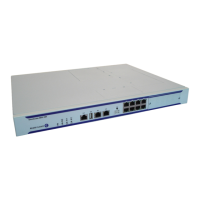Virtual Leased Line Services
7750 SR OS Services Guide Page 127
Pseudowire Switching with Protection
Figure 23 illustrates the use of pseudowire redundancy to provide a scalable and resilient VLL
service across multiple IGP areas in a provider network.
Figure 10: VLL Resilience with Pseudowire Redundancy and Switching
In the network shown in Figure 23, the user configures a VLL service, for example, an Epipe, at
the ingress PE (7x50 T-PE1), at the egress PE (7x50 T-PE2), and at each pseudowire switching
node (S-PE1 and S-PE2). All VLL service types, such as, Apipe, Epipe, Fpipe, and Ipipe are
supported. The pseudowire switching service at S-PE is supported only between the pseudowire of
the same service type. Note that the user could also configure a VPLS service at the T-PE nodes.
However, the service at the switching nodes is still an Ethernet VLL service in this case.This may
be added in a future release. VC-ID values are significant on a hop-by-hop basis and are unique on
a per T- LDP session only.
The pseudowire switching capability can bind two spoke SDPs of different transport types, such
as, RSVP LSP and LDP LSP. There is no restriction on mixing the SDP types currently supported
OSSG114
Core area
Metro area B
Metro area A
Access Node
Access Node
7x50 T-PE2
7x50 T-PE1
7x50
7x50
7x50 S-PE3
7x50 S-PE1
7x50 T-PE3
Primary PW
Standby PW
7x50
7x50
7x50
7x50 S-PE4
PW switching
SDP6:600
SDP4:400
SDP1:100
SDP3:300
7x50 S-PE2
PW switching
PW switching
PW switching

